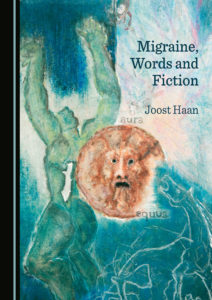Migraine and language
By: Assistant Professor Joost Haan, neurologist and headache specialist at Leiden University Medical Centre and Alrijne Hospital Leiderdorp
For a diagnosis of migraine there is no biological proof such as a scan, electroencephalogram (EEG) or blood test. A doctor can only make the diagnosis based on the words of the patient. So, a diagnosis of migraine depends on language.
We all know what pain is, but to describe it everyone uses their own words. To illustrate this subjectivity of pain the philosopher Ludwig Wittgenstein proposed a situation where everyone has a box and knows that it contains a ‘beetle’. By looking into their own box, they may perceive what a beetle looks like. No one, however, can look into anyone else’s box. No one knows what form, colour or shape the beetle of the other has. So, the word ‘beetle’ may signify an object that looks like a ‘real’ beetle, but it may also be one that resembles a coin or a cigarette. The same is true for pain: no one can feel the pain of others. Nevertheless, a description of pain in words is of vital importance to make a diagnosis.
To describe the relationship between words and ‘reality’, the Swiss linguist Ferdinand de Saussure used the terms ‘signified’ for (the image of) an object in reality and ‘signifier’ to refer to this object. The relationship between signified and signifier is arbitrary, e.g. why do we call a mouse ‘mouse’? When thinking about a ‘mouse’ this occurs first as an image in our head. Although the images in people’s heads may be very diverse, they can still fall under one signifier. For example, the mental image of a photograph of a mouse, a real mouse or a drawing of Mickey Mouse, all can fall under the signifier ‘mouse’. Of the signifier ‘pain’ almost everyone has one’s own ‘image’ but one can call it a ‘signifier without signified’ as it has no ‘material’ place in reality.
For migraine, a signified was created. To make a diagnosis, criteria were defined, which are artificial ‘rules’ for when to call a headache ‘migraine’. These criteria define the duration of a migraine attack between 4 and 72 hours, and some features in certain combinations, such as one-sided pain, severe pain, throbbing pain and pain that worsens with activity. There must also be accompanying symptoms, such as nausea, or sensitivity to light, sound and smell. What is clear is that such a description of migraine in words by a patient heavily depends on metaphors. For example, a patient can translate what he or she feels in ‘throbbing’, ‘stabbing’, ‘pulsating’, ‘pressing’, etc. No one can check this, because they are signifiers without the signified. Nevertheless, the patient must be believed unconditionally.
There is another problem concerning the ‘translation’ of pain into words. A former chairman of the Dutch Society of Headache Patients once said: ‘When you see them, they do not have it. When they have it, you don’t see them’. With this he meant that migraine patients only visit their doctor when they are well. When they have a migraine attack at the time of their appointment, they have to cancel it. A consequence of this is that doctors only see patients that are well. The patients must use their memory to describe the pain. So, not only a translation of the pain into words, but also a translation of the memory of the pain into words is crucial.
The destruction of language by pain is another important issue. It is the main topic of Elaine Scarry’s landmark book The Body in Pain. She focusses on the destruction of language by torture, but her thoughts have been interpreted more broadly to include all causes of pain. Indeed, many patients with migraine stay silent due to their affliction. They may be silent when they do not have a headache (because then there is no reason to complain), but also at the time they have a headache (because then the pain often is too severe to speak). So, migraine seems to result in a ‘double destruction’ of words. I analysed this and concluded that during migraine attacks one can indeed speak of destruction, but outside attacks migraine can have an enormous creative potential when patients find the words and metaphors to describe their pain.
In my book Migraine, words and fiction I analyse several novels in which migraine is described. The most remarkable in the light of the ‘creation by migraine’ is The Blindfold (1992) by Siri Hustvedt. She uses descriptions of her own migraine in this text, as can be read in her later essay The Shaking Woman (2010).
To summarise, words, language and memory are important for the diagnosis of migraine. The diagnosis, however, is only based on an agreement, not on a biological test. Migraine does not destroy language, but even seems to enhance it.
You can find out more about Migraine, words and fiction and order a copy here.



